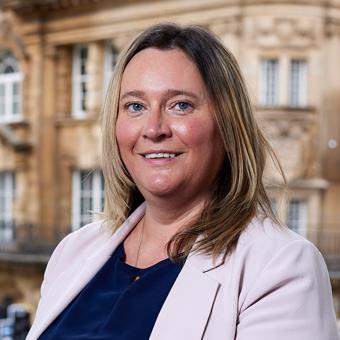There’s no reason why customer experience can’t improve in conveyancing, according to Lexis Nexis Enterprise Solutions’ commercial director, Simon Farthing.
Moving home is still cited as being one of the most stressful life experiences. For most people a new home is more than just bricks and mortar, it is the emotion associated with the life-changing upheaval in circumstances: perhaps it’s a new beginning, a new catchment area for your child’s first school, a new job in a fresh location, the place where you will start a family or the place where you will end your years.
The process of conveyancing can often seem impenetrable to clients, with delays and disruptions commonplace. As the lawyer you are the guide, not just the technical expert, and expectations mix with emotions to make this a difficult task to perform.
Stubborn status quo
Surprisingly, over the centuries, little has changed in the way conveyancing transactions are executed, and this is not a rapidly evolving or heavily legislated area of the law. There are, however, many different solutions and technologies available to enhance the conveyancing experience, all designed with the promise of ensuring smooth operation.
Many of these technologies have already been adopted by conveyancers, so why are clients still dissatisfied?
Could it be that, in some respects, technology is proving to be more of a barrier than a benefit?
In my experience, it isn’t the technology per se that is the issue: the problem lies in its application and delivery. Many firms have adopted technology with the best intentions, to address client service needs, but, understandably, with an inward-looking focus.
So, technology adoption is driven by objectives such as enhancing case worker productivity, better management of caseloads, business efficiency, profitability and so forth. This, however, misses out on the benefits of bringing everything together in a holistic and seamless experience.
Of course, these are critical business objectives that must be pursued – but what about good communication, an outcome that can potentially make or break the perception of customer experience?
Putting the customer journey at the heart of the conveyancing process is potentially the answer. This does not require adoption of a new or different system, it just means that firms need to make adjustments in their case and matter management systems, workflows and processes to ensure that the customer experience isn’t compromised or lost sight of.
Make tech do the heavy lifting
For instance, for better communication, stripping out any unnecessary, time-consuming processes as well as providing transparency and visibility of the progress of transactions, end-to-end, is the obvious solution.
In fairness, conveyancers are already trying to do this, and some do it very well, but this is a problem for the many not the few, and we must ensure a commonly high standard. Many firms now have apps that customers can use to input and/or upload information. The problem though is that not all these apps are as intuitive and user friendly as they should be.
The result? Frequently these apps end up causing more frustration and upset, with the customer eventually resorting to the traditional, paper-based, and cumbersome way of providing the information.
This is where the solution can easily be devised, by balancing process automation with meaningful human interaction at the right points across the transaction, so a genuine “personalised” service can be provided.
Consider the onboarding process – it is among the first hurdles that clients have to jump over. If conveyancers ensured this initial client interaction took no more than 24 hours, an immediate reduction in client stress levels would become apparent.
Furthermore, with the numerous apps available and deployed, Know Your Customer (KYC) could easily be integrated into the onboarding process, saving time for the client and conveyancer alike. Similarly, automating activities such as search requisitions, automated registrations and sharing documents, are easy processes to establish, as are manual follow-ups and activity updates such as raising additional enquiries, receipt of offer from the mortgage company and exchange date, all of which can, again, be automated.
Personal, human interactions can be saved for value-adding exchanges in situations where the customer benefits from advice and counselling, or in unforeseen situations to help protect them from risk.
Finish the job
The registration process is another area of frustration for clients, yet an easy win for conveyancers.
Frequently, the length of time between completion and completed registration is vast. This usually is due to solicitors prioritising the completion of front-end transactions, moving their focus onto other client transactions thereafter.
This is due to the pressures of the law firm functioning as a profitable business, with solicitors focusing on receiving payment rather than ensuring full delivery of the service. For clients, however, receiving the completed registration is a matter of urgency, and so they hold conveyancers responsible with the duty to ensure timely completion.
It is important to remember profitability and superior customer experience are not mutually exclusive.
However, an enhanced customer experience helps to improve market reputation, grow the business, and increase profitability. So, adopting tech in a way that meets both these objectives makes business sense.
Fundamentally, there is no reason why conveyancing cannot provide a superior customer experience. The requirements of sale and purchase are well documented, the processes are established, and the technology is proven, and time tested.
Merely by applying the capabilities provided by the technology, optimising their use, and equally balancing solicitor and client needs, conveyancers can make huge strides in the customer experience they deliver.
Visit
LexisNexis Enterprise Solutions
Connect with Simon Farthing via LinkedIn











